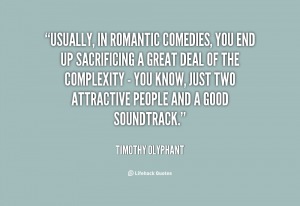Exploding Genre- PB 1
Statement of Intent
What I am thrilled to get out of Exploding Genre is challenging and eye-opening theories about film genre and itself as a mode of classification. I am also fascinated from the idea of a “hybrid genre” because of how a “mash-up” film signifies one’s unique imagination in which it encourages creativity. Rick Altman’s theory of semantic and syntactic genre as textual elements and contextual structure respectively provides a solid foundation in further defining what genre is.
In this studio, I would also like to question genre in response to the problems and issues of genre. Moreover, why those genre exists. A Hollywood scholar Stephen Neale’s theory of defamiliarisation seems to act as a significant aid to further investigate about genre. Drama as we know is a complex genre especially among contemporary films. There are a number of drama subgenres including historical drama, melodrama, docudrama and so on. Though, there are also drama films that are constructed with a mixture of patterns and become a hybrid such as drama with romantic-comedy elements conveyed. I found these cross-genre interesting and would like to explore a further depth on the notion of drama.
Finally, experimenting on mixtures of genre is what I am mostly excited about. Through genre sketches and editing skills practice, I would like to play on the elements as means to generate certain response that are ambiguous and yet impactful. Touching upon drama, which proves to be a popular genre and reconstructing it through mash-up techniques would be an interesting aspect of genre study about the notion of defamiliarisation.
Case Study; The Danish Girl
Tom Hooper’s biographical film The Danish Girl (2015) not only is classified as romance but also enters the subgenre historical drama. The film centres its focal point based on the life of Lili Elbe, the first surgically performed transgender in historical records. Eddie Redmayne was casted as Lili Elbe and performed a significant emotional and physical transformation of a courageous real-life figure. The film’s convention of this emotional-driven biography that implements tragic events generates a particular heart-breaking response, in which defines itself within a drama genre. The fact that the filmmaker chooses to adapt the historical life-changing figure and also focuses on his love life further generates a legitimate impact to the viewers. Stephen Teo in his talk mentioned the “Rasa Sentiments” or tastes within each genre films as a way of signifying what emotional impact is present within the film or as patterns in genre (2016). Shot with long-distance shots and long takes signifying the settings stretches the film in a slower pace creating a harmonious rhythm. These patterns are often conveyed in romance and biographical dramas as means to create specific “touching” response. Hence the patterns are used accordingly to divide stories in different genres and genres act only as means to group these emotions or “Rasa”.
The Danish Girl exemplifies a hybrid of genres between historical biography, romance and drama. As Ishiguro and Gaiman pointed out, it is important not to “take these boundaries too seriously” as they can limit one’s imagination (2015). The film is constructed with a narrative focusing on not only Lili Elbe’s gender identity crisis and transformation but also his relationship with his wife. Elbe’s change from a “husband” to a person exploring sexual identity with another man have had an emotional impact on his wife. To mix a romance film consisting of intimate scenes with a controversial historical moments makes The Danish Girl unusual to one specific genre. Therefore, Hooper has encouraged an exceptional play of conventions consisting different “tastes”.
Gaiman, N, Ishiguro, K 2015, New Statesman, “Let’s talk about genre: Neil Gaiman and Kazuo Ishiguro in conversation”, updated June 4, <http://www.newstatesman.com/2015/05/neil-gaiman-kazuo-ishiguro-interview-literature-genre-machines-can-toil-they-can-t-imagine>.
Teo, S 2016, Eastern Westerns: A Rasa Revisionist View of Once Upon a Time in the West and The Searchers, speech July 26.













